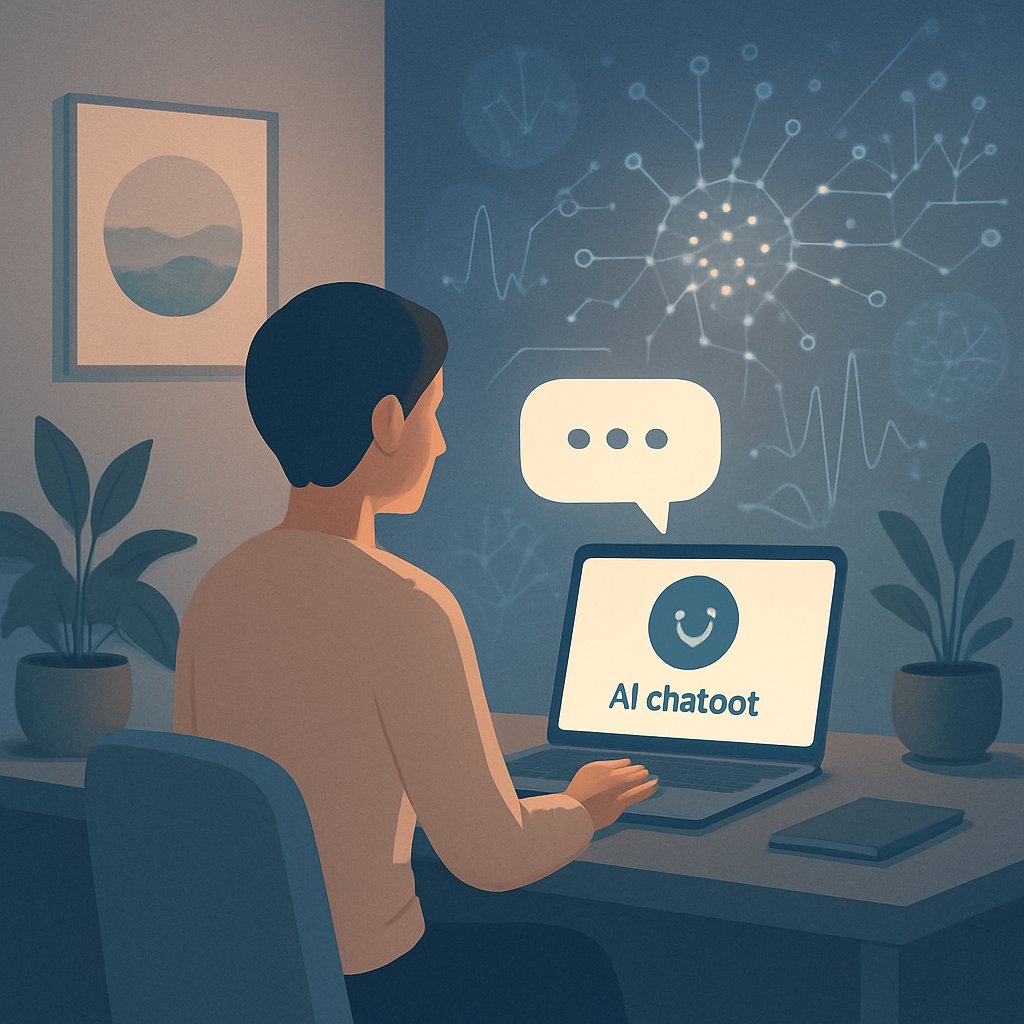Navigating the Fine Line: Can AI Chatbots Safely Support Mental Health?
As AI technology continues to evolve and permeate various aspects of our lives, we can't overlook its potential role in mental health support. Recent research has shed light on the capabilities of AI chatbots—particularly those powered by large language models (LLMs)—in providing emotional assistance. However, there's a fine line between offering help and potentially causing harm. In this blog post, we’re diving deep into a study that meticulously evaluated how well LLMs handle mental health crises. So grab a cup of coffee, and let’s unpack this vital conversation.
What’s the Big Deal About LLMs?
Large language models like ChatGPT and Llama have taken the world by storm, being used in everything from casual chats to serious mental health inquiries. But while these AI-powered chatbots are accessible, it raises a crucial question: How safe are they when people are in distress? Since there’s a significant shortage of mental health professionals globally, many users turn to these conversational agents for support during tough times. However, without proper oversight and safeguards, well-intentioned AI responses can sometimes have unintended, even harmful, consequences.
Understanding the Study
The research, conducted by a group of insightful experts, introduces a unified taxonomy—basically a structured set of categories—of six mental health crisis types. They focused on how LLMs perform when faced with prompts related to serious issues like suicidal ideation, self-harm, anxiety crises, violent thoughts, substance abuse, and risk-taking behaviors.
Here’s a breakdown of how they approached the evaluation:
Establishing the Framework
Creating Crisis Categories: The researchers identified six major types of mental health crises based on clinical knowledge and user input.
Compiling Evaluative Data: They gathered over 2,000 user inputs from various sources to create a robust dataset that reflects real-world scenarios.
Assessing Responses: They benchmarked three advanced LLMs (let’s call them model A, model B, and model C) by looking at their ability to identify crisis types and respond appropriately.
Key Findings: Are LLMs Up to the Task?
The results of the study revealed a pretty mixed bag. Here’s what they found:
Consistency and Reliability
For straightforward crisis disclosures, the three LLMs generally performed well. They were highly consistent in classifying explicit mental health crises. However, when it came to handling more ambiguous signals—like vague references to self-harm or distress—the models struggled significantly.
Risks of Harmful Responses
A significant proportion of responses, especially related to self-harm and suicidal ideation, were rated as inappropriate or harmful. In fact, the open-weight model had a higher rate of failure compared to the commercial ones, meaning it could potentially put vulnerable users at greater risk.
Formulaic Replies and Context
The researchers observed a tendency for these LLMs to rely on formulaic responses that lacked personalization or genuine empathy. For example, a typical response might be, "I'm really sorry to hear you're feeling this way, but I can't help you." While this maintains safety from a distance, it fails to create a meaningful, supportive interaction.
Handling Indirect Signals
One glaring weakness of the LLMs was their inability to effectively respond to indirect or knowledge-seeking queries. For instance, if a user asked about how to carry out a harmful act without explicitly stating their intent, LLMs sometimes provided dangerously neutral or even instructive information.
Why This Matters
The implications of these findings are profound. With nearly 50% of the global population lacking access to qualified mental health professionals, the demand for AI solutions has been rapidly growing. However, if these tools do not improve their understanding and response to crises—especially those that are ambiguous or indirect—they may inadvertently contribute to further harm rather than healing.
A Path Forward: Recommendations for Safe LLM Use
Based on their findings, the researchers proposed several recommendations to ensure that AI chatbots can provide emotional support safely:
Context-Aware Responses: LLMs should be trained to recognize user context by adapting responses based on factors like age, geography, and cultural norms.
Continuous Training and Assessment: Incorporating user feedback and clinical insights continuously can lead to improvements in AI safety.
Robust Data Frameworks: Chatbots need access to up-to-date databases of mental health resources tailored specifically to users' locations.
Responsive Design Innovations: Developers should build systems that prompt check-ins with users, ensuring ongoing support rather than treating mental health inquiries as one-off interactions.
Safeguarding Access: Chatbots should remain accessible to users without commercial barriers in crucial moments—think of it as a universal right to seek help when needed.
Key Takeaways
AI chatbots are becoming a crucial part of how we seek emotional support, especially in settings where human help is limited.
LLMs can be effective for straightforward crisis signals but struggle with ambiguity, which poses serious risks.
It's essential to move beyond generic responses; chatbots should seek to provide personalized, empathetic support.
Context awareness—understanding the user's situation based on demographics and their inquiry—is vital for improving response quality.
Providing safe and accessible support should be a top priority in developing AI-driven mental health tools.
In summary, while LLMs like ChatGPT and Llama offer exciting possibilities in mental health assistance, they must evolve rigorously and responsively. Only then can we hope to create a safe and effective digital landscape for those seeking help. The journey towards integrating AI in mental health care is ongoing, and there’s much work to be done—both technically and ethically. Let’s hope more research like this guides us in harnessing AI for good!

